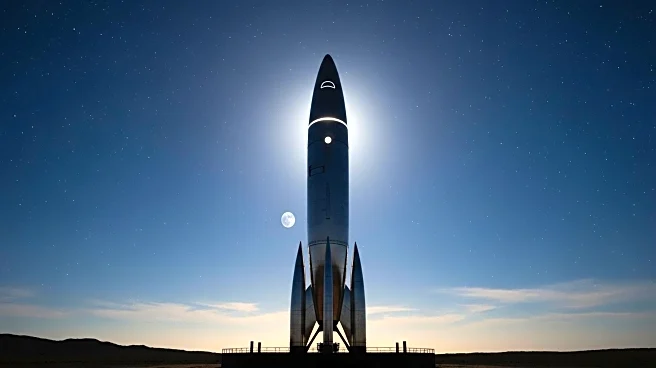What's Happening?
SpaceX's Starship rocket recently completed its 10th flight, showcasing a successful test of its heat shield technology. The flight, which ended with a soft landing in the Indian Ocean, revealed a striking orange discoloration on the second stage, sparking speculation about potential damage. However, SpaceX founder Elon Musk clarified that the discoloration was due to oxidized metallic test tiles and insulation areas where tiles were deliberately removed. The heat shield's performance is crucial for making the upper stage rapidly reusable, a goal SpaceX aims to achieve by reflying Starships within 24 hours. This development marks significant progress in SpaceX's efforts to enhance the reusability of its spacecraft, a key factor in reducing costs and turnaround times for space missions.
Why It's Important?
The successful test of Starship's heat shield is a pivotal step towards achieving rapid reusability, which could revolutionize space travel by significantly lowering costs and increasing the frequency of missions. This advancement aligns with SpaceX's long-term vision of making space travel more accessible and sustainable. By reducing the need for extensive refurbishment between flights, SpaceX can streamline operations and potentially increase its competitive edge in the aerospace industry. The implications extend to potential collaborations with NASA and other space agencies, as well as commercial opportunities in satellite deployment and interplanetary exploration.
What's Next?
SpaceX plans to continue testing and refining the heat shield technology in upcoming flights, with the goal of achieving full reusability of the Starship upper stage. Future missions will focus on gathering more data to optimize the heat shield's performance and ensure its reliability during reentry. As SpaceX progresses towards its goal of rapid reusability, stakeholders in the aerospace industry will be closely monitoring these developments, which could influence future partnerships and investments in space exploration technologies.












